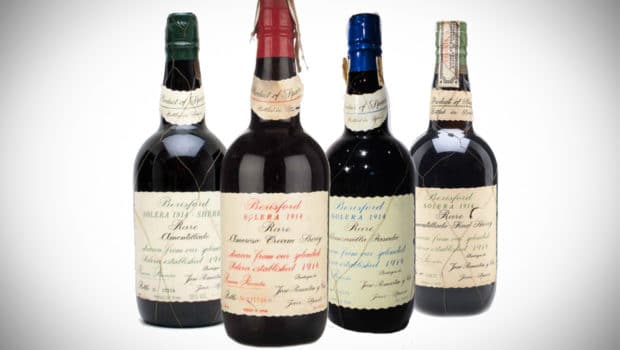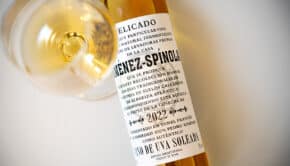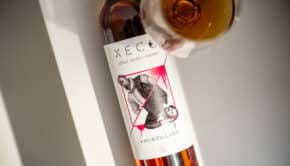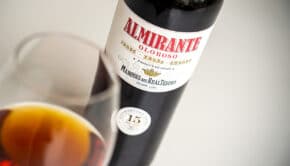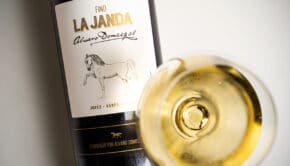The Berisford Solera 1914 mystery
I’ve been actively looking for old bottles of sherry for several years now, on auctions websites, from wines & spirits retailers, etc. – some of which I could trace back to the 1860s. If there’s one type of bottle that I’ve witnessed so regularly that I’ve become a bit suspicious, it must be the series of Berisford Solera 1914. Most of the time the label says Berisford, with José Pemartin as the shipper and Capital Wine & Travers Ltd. (Harwich) as the UK distributor on the back label.
In other occasions the front label says Pemartin Solera 1914 with Cavendish Wines & Spirits on the back label. Around the bottle there’s usually a gold-coloured mesh like you sometimes see in Rioja bottles (originally intended to prevent counterfeit, later just a marketing gimmick).
There is a whole list of bottlings, all under the Solera 1914 flag. I’ve seen an Old Fino, a Manzanilla Pasada, Amontillado Fino, Amontillado, Pale Cream, Amoroso Cream, Solera Brown Sherry… and they’re all drawn from our splendid Solera established 1914. Although there are other cases of two or three soleras that were founded within the same year, it would be strange to see so many different soleras laid down in one year, especially a year in which you’d need a lot of faith in world politics to start such an adventure.
Bodegas José Pemartin
The bodegas Pemartin were started in 1818 by the Frenchman Julien Pemartin, who had acquired the Spanish nationality a few year earlier. He planted a vineyard, occupied the bodega El Cuadro in Jerez and worked with Sandeman as their agent in the UK. After the death of Julian Pemartin the company dissolved, but it was restarted by his oldest son Julian. However the company set high standards and they quickly owed so much money to Sandeman that the whole company was swallowed around 1879.
It was then the youngest son José Pemartin who restarted the brand, with new vineyards, new bodegas and new soleras. Finally in 1959, the firm was taken over by Rumasa. After that the brand was simply one of many that lived under the Rumasa empire. The name Pemartin is nowadays still in use but only for a couple of lower-end wines (the Pemartin series from bodega Diez-Merito), a pretty sad ending for a famous name.
Garcia Raya / Jiménez González
Back to the Solera 1914 wines. I believe they originated in another bodega, as I’ve found a picture of a supposedly older bottle of the Solera 1914 that says Garcia Raya y Cia. However I couldn’t find any information on a bodega with this name. It’s probably an old bodega that was taken over by José Pemartin (or taken over by the Rumasa empire and marketed as José Pemartin afterwards).
The same bottle also exists with more or less the same label but with a different bodega name: Jiménez González Hnos. The back label says embotellado especial para mi amigo A. Van de Kant, Tilburg. He was the founder of the company Jean Arnaud, a wine distributor in The Netherlands. The Jiménez González family is related to the bodega Jiménez Varela, which was indeed sold up to Rumasa in the 1960s.
It seems Rumasa simply used different bodega names as it suited them. After all they had taken over 20 bodegas with their respective trademarks.
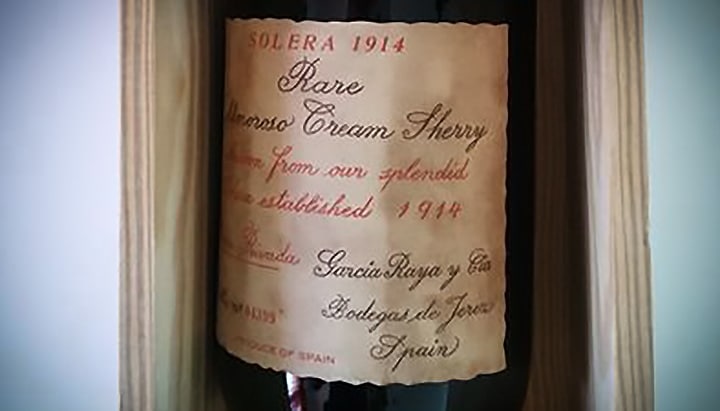
Solera 1914 – Garcia Raya y Cia
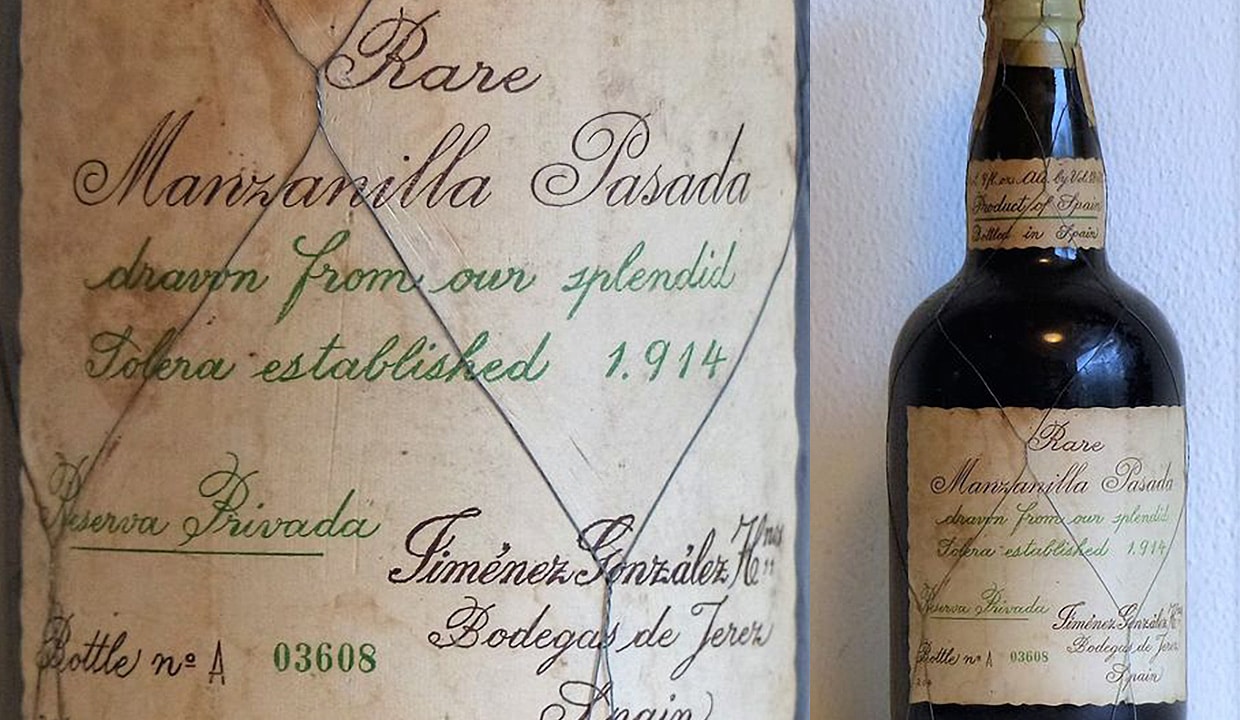
Solera 1914 Manzanilla Pasada – Jiménez González
Extreme auction prices
Now you’re asking: why are you dedicating an article to this? Well, because bottles like this pop up often. Too often to explain perhaps. You can find one currently for sale (examples: Vintage Wine & Port or Master of Malt) and it’s often seen on auction websites (Catawiki among others). Did you notice they go for € 170 to € 250+? That’s crazy. You see, often people seem to go blind for the fact that 1914 doesn’t mean the wine is over a century old.
The solera was founded in 1914, but the wine could perfectly have been 5 years on average upon bottling. That’s just how a solera works and especially for a Fino or Manzanilla it is technically impossible to go over +/- 10 years old. Above this age it would naturally become an Amontillado.
On many occasions this information is left out by the sellers and often I’ve even seen it explicitely being named a vintage 1914 wine (see The Saleroom or Old Liquors or Catchpole Cellars). Many buyers are not familiar with sherry, and their ignorance makes the prices rise through the roof. And while some sellers are honest about the fact that it is a solera wine, there now seem to be enough precedents for settling in this price region and still get away with it.
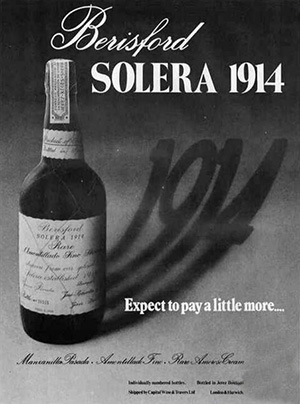
Some elements are shady
Different things about these bottles don’t seem to add up. It’s strange to believe that so many soleras with different types of wines were all established in 1914. Often there are no records to prove this, and we all know Rumasa (who sold these bottles through Bodegas Internacionales in the 1970s-1980s) had some unorthodox business practices, to say the least. After all it was the biggest case of fraude and expropriations in the history of Spain. Let’s just say we have some reservations towards the foundation date of the solera. Other than this, there’s no real evidence for the ‘rare quality’ of these wines either.
Solera 1914 bottled in the 1970s and 1980s
The age of the bottles is also played around with by many sellers because so many bottles look very similar. It’s often sold as a 1960s bottling, which may be true for the Garcia Raya or Jiménez González versions but they are very rare, and the other ones are certainly more recent. The ones that mention the Berisford brand are from the late 1970s. I happen to own a 1977 bottle myself and I’ve found an advert in a 1978 newspaper that has this type of bottle in the picture (Expect to pay a little more, ha!).
The ones that say Pemartin Solera 1914 are mostly from the 1980s (confirmed by the fact that Cavendish Wines & Spirits was incorporated in December 1984 and this bottle that seems to have been a present in 1980). Another clue is to look at the producer code (from the Cádiz bottler registry): some labels that mention 204 (Jiménez González) or 204-CA (García Raya) are supposedly from the 1970s. Other bottles mention RE-2068-CA (the company code of Bodegas Internacionales), these are certainly from the 1980s.
Solera 1914: outrageous prices
My conclusion: most of these bottles are much younger than claimed, simply because older versions are easily mistaken for younger examples. Until now, hardly any information was available to set them apart. Add to this some smart sales tactics and a general confusion about the ‘vintage’ year 1914 and you end up with a bunch of bottles that fetch outrageous prices for no particular reason.
I have found no indications that these wines would be of exceptional quality and they’re certainly not as rare as you’d think! There’s no way they can justify a € 200 price tag, so if you’re planning to spend that amount on an old bottle of sherry, I would advise to choose one that is surrounded by less mystery. A nice current-day VORS will get you a lot more certainty about buying a genuinly old and wonderful wine.
Update 2019: it seems this article has had an effect. New Berisford bottles that are offered in auctions or in specialized stores are often in the € 60-80 region, much more reasonable for this kind of wine.


